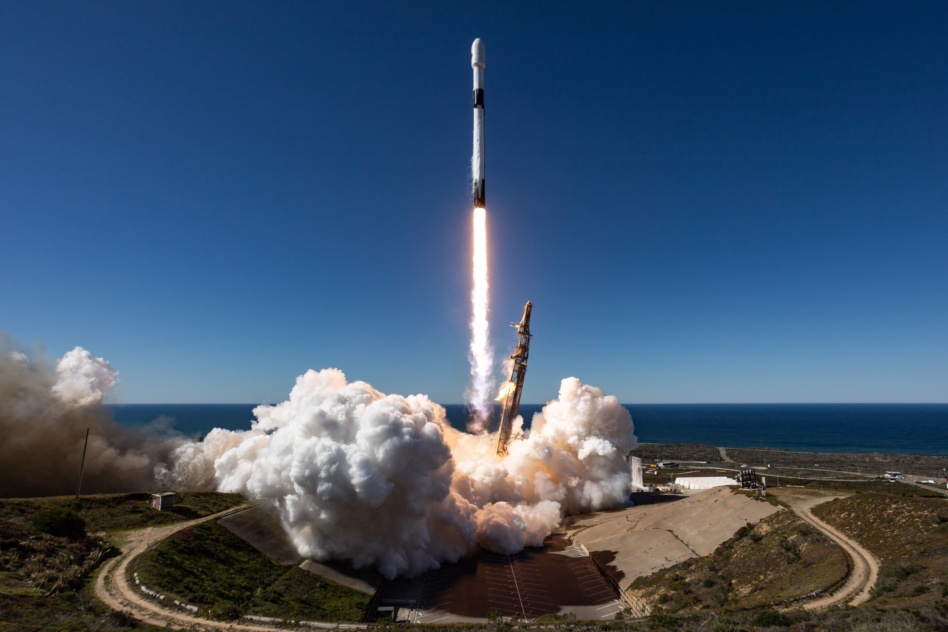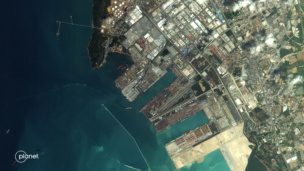We’ve made it halfway through 2022. The year has flown by, but it’s been filled with big news and firsts for the space industry. Here’s our recap of the off-Earth goings-on during these last six months.
Q1
The year started off with a bang as JWST unfolded successfully, reached its new home a million miles away from Earth, and began prepping its instruments for science ops.
In February, the FAA granted the first streamlined Part 450 license to Astra, opening the doors to faster and more efficient launch permissions for commercial rocket companies. Jared Isaacman and SpaceX also announced the ambitious Polaris Program.
Russia invaded Ukraine at the end of February (and the war has been raging on for 126 days). Commercial satellite operators stepped up to the plate, bringing satellite imagery to the forefront of OSINT and meeting the Ukrainian government’s needs for space-based intelligence. On the broadband front, SpaceX and Iridium sent terminals and satphones/push-to-talk devices into Ukraine.
In March, Astra reached orbit for the first time, and Pres. Biden finally signed the FY22 federal appropriations bill into law.
Payload’s fundraising coverage: Radian emerged from stealth, announcing its spaceplane plans and $27.5M seed. E-Space raised a $50M seed round, Aerospacelab raised a €40M Series B, CesiumAstro raised a $60M Series B, and Slingshot Aerospace raised a $25M Series A-1.
And that’s not all, folks—for more of the details, check out our Q1 2022 news roundup.
Moving right along to Q2 and April
With Space Symposium falling in the middle of the month, we bore witness to a flurry of blockbuster announcements. Chief among them was Amazon’s block buy of the most commercial launches ever, with Project Kuiper reserving up to 83 flights from ULA, Arianespace, and Blue Origin. Space tourism had a moment as World View and Space Perspective made business moves.
New rocket engines made it to testing, with SpaceRyde and Launcher each announcing major milestones. Ursa Major production units came off the line and the Colorado startup inked a huge engine deal with Phantom Space.
The White House announced a unilateral ban on direct-ascent ASAT (antisatellite) testing, leading the way for other countries to announce similar bans.
On the war front, the loss of Antonov airplanes in Ukraine impacted GEO component shipping as satellite operators looked for other ways to transport flight units. ESA also withdrew from Roscosmos lunar missions. HawkEye360 and NSSA launched a Ukraine aid initiative for the space industry.
Payload’s fundraising coverage: ConstellR acquired hyperspectral imaging company ScanWorld, Capella raised a $97M round of funding, and RFA won €11M in a German microlauncher competition.
May
Rocket Lab attempted its first helicopter capture of the first stage of Electron in the first days of May, ending up dropping the stage before fully securing it. Boeing’s Starliner capsule also finally made it to the ISS. ESA had to maneuver a satellite around a piece of debris created in the Russian ASAT test last November. The NRO announced its largest-ever satellite imagery procurement contracts. Finally, Transporter-5 put a bunch of your satellites, spacecraft, and tugs into orbit.
Payload’s fundraising coverage: Three propulsion startups—Firehawk, Adranos, and X-Bow Systems—raised Series A rounds. AstroForge raised a $13M seed round.
Payload spotlight: We published Part 1 of our first online, in-depth feature series. And on May 31, we launched Pathfinder, a podcast hosted by Payload Managing editor Ryan Duffy, with Axiom’s Michael “Suff” Suffredini as our first guest.
- Our fav quote from Pathfinder #0001: “Eventually, our big plan is in the second half of the century…we begin building a space city.”
June
NASA awarded its commercial EVA spacesuit contracts to Axiom and Collins Aerospace. Sony opened the doors to a new laser comms business. Ursa Major unveiled its new Arroway engine design. The FAA, at long last, released its finding of no significant environmental impact on Starship, clearing the biggest hurdle separating the giant Mars rocket from launch. SFL performed passive debris deorbiting for the first time using drag sails. Sierra Space announced its very own astronaut training program. And NASA and Rocket Lab launched CAPSTONE, a pathfinding mission to a unique lunar orbit.
Payload’s fundraising coverage: Ion-X raised a €3.8M funding round. QuadSAT received €500,000 in ESA funding.
Payload spotlight: We published part 2 of our Regulating Orbital Debris series, debuted our must-listen summer space-themed playlist, began regular Payload audience newsletter polls, and held our first all-hands offsite. Across Q1 and Q2, Payload’s team attended dozens of events in-person and were able to meet many of you face-to-face for the first time. We kept Pathfinder coming weekly, with #0002 featuring Rob Meyerson, 0003 with Lauren Lyons, 0004 with Katherine Boyle, and this week, 0005 with Lori Garver.
*Deep breath*
Whew, that was a lot. Here’s to many more launches, exciting firsts, and positive space vibes for the back half of 2022!




